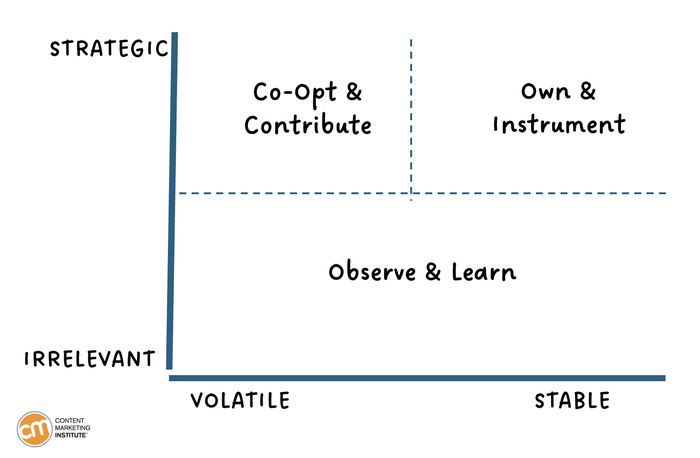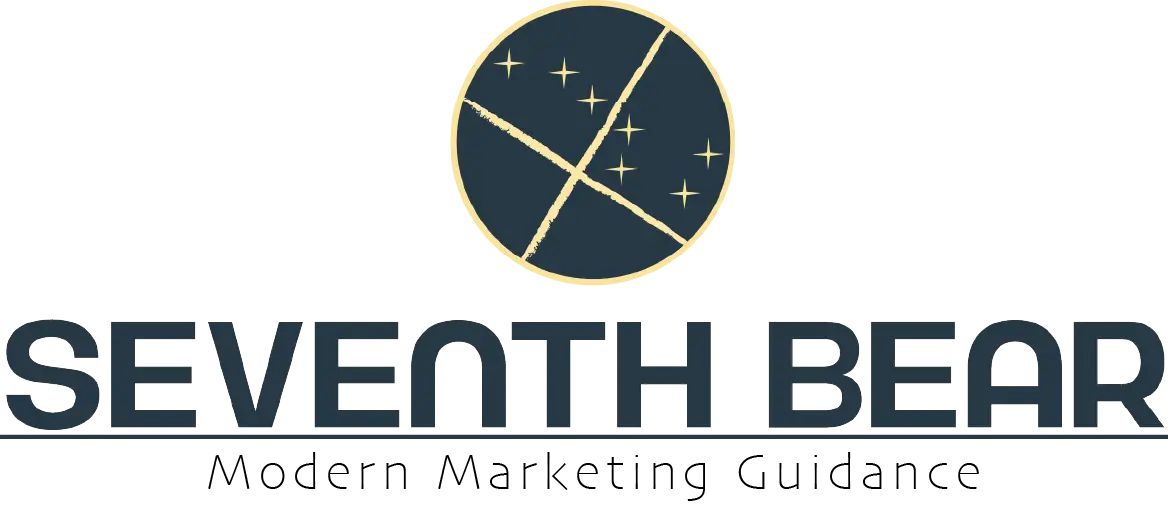Are Answer Engines the new website?
Believe it or not, brands once considered replacing their websites with Facebook pages. Yes, really.
Barely 15 years ago, some brands genuinely believed their entire digital footprint could exist inside Facebook’s walled garden, and they wouldn’t need a standalone site.
Oh, how times change. Or not.
Today, a new gold rush is taking shape. Every day, a new hyped-up post tells you that you should optimize all your content for generative AI search.
Generative AI “answer engines” are having an undeniable impact.
One recent study found that as of March 2025, 13.1% of all U.S. desktop queries now trigger Google’s AI-generated overviews — up from 6.5% in January. The Wall Street Journal reported earlier this month that organic traffic to publishers had decreased by as much as 55% due to generative AI search.
So, the rush is on to become the source that AI assistants cite in their answers. In other words, become the Answer Engine.
Everyone is urged to create content that will position them as a go-to source for large language models (LLMs).
And supporting that effort? Shiny new citation dashboards. Far be it from martech vendors to pass up a good hype cycle.
Now we’ve got “answer engine positions”, “LLM visibility scores,” “citation share of voice,” and “prompt occupancy” metrics (because God forbid marketers go a quarter without a fresh vanity metric to chase).
Let’s take a breath — because we’ve seen this movie before.
Somehow, rented land returned
In the early 2000s, we marketers created sprawling, open, and structured websites and blogs to help their brands “be found” by ranking high on search engines.
We made it as easy as possible for search engines to index all our ideas. Then, those same platforms slowly downgraded organic results to favor paid placement.
In the 2010s, marketers were all too eager to flood social media with content to build “communities” there. This content helped social platforms become destinations. In return, those platforms built walls around their gardens and took measures to erode organic visibility to single-digit percentages.
Here we are again. New platforms built on our ideas are asking for more of our insights and more of our content. And once again, we’re told it’s in our best interest to hand it over. Quickly.
Maybe I’m too cynical. Maybe real opportunity awaits in zero-click and AI-driven “answer engines.”
Maybe. But what if we do what we haven’t done in the last 25 years? Let’s take a beat before deciding to feed the beast that’s hungry for our ideas to line their own pockets.
Two answer engine factors to consider
As you dive into the waters of LLM optimization or answer engine optimization (AEO), consider the structural frictions inherent in these models. These aren’t quirks or new formats — they’re fundamental challenges that make ranking in AI answers a very different game from traditional SEO.
1. Answer engines are slot machines, not vending machines
LLMs (ChatGPT, Perplexity, and Google’s AI search) are probabilistic, not deterministic. Different users can ask the same question to the same LLM and receive different answers and different sources.
Worse, you can ask the same question minutes apart and get wildly different results.
My point: Your brand might be cited in an answer today. Tomorrow, it might vanish entirely. And there’s absolutely nothing you can do about that.
Traditional SEO offers (or offered: past tense is probably better) at least a semblance of shelf space. If you made the first page, you stayed there for a while. With answer engine optimization, performance is a snapshot. A moment. A coin flip.
So, how do we measure anything?
Should you chase broad trends?
Should you target your audience segments with first-party data?
Or, inevitably, will you pay to be consistently cited — just like you now have to do with Google? (It feels like déjà vu.)
These are questions worth asking before you throw your entire content strategy into the slot machine.
2. Zero-click economics
One of the most amusing parts of the answer engine hype is how quickly the value proposition collapses under scrutiny.
The rallying cry goes: “You’ve got to be the answer! Your brand will be right there in the AI result!”
Which sounds great — until you ask, “Then what?”
The only answer seems to be, “Well, it’s better than not being there.” That’s not a strategy. That’s just shrugging loudly.
Citations stretch the definition of “impression.” And being the answer isn’t the same as being chosen.
People who use answer engines often don’t click through to any of the cited sources, especially if the AI-generated answer is relatively satisfying.
Ironically, we’re told to solve the problem of falling traffic by giving AI better content — which will, in turn, make our traffic fall even faster.
So, what are we optimizing for?
A thumbnail icon? A metadata snippet? A hallucinated remix that misses your actual answer?
And if you are cited, how do you stand out? If your content appears in the answer, but it’s not credited meaningfully, then what? If the answer’s wrong, and you’re cited along with three AI-slop blogs, is that good? Put simply: What’s the win?
Maybe the goal is to show up more often for common queries. But that feels like we’re optimizing the AI’s product experience, not ours.
A brake-check framework
You might ask, “Why play this game at all? Maybe we should ignore AI answers entirely.”
But ignoring AI isn’t an option for most brands. The genie isn’t going back into the bottle. A growing share of your customers will use AI assistants or AI-infused search.
The key is calibrated investment. Don’t pour half your content budget into chasing AI visibility. Instead, dedicate a slice of resources to pilot projects that measure your presence and traction in AI outputs.
That brings us back to the question, “What’s the win?” What are we measuring?
I’ve been using a framework for calibrating content efforts. It’s still a work in progress, as the ground beneath us is still forming.
SEO 1.0 taught us that not all queries are equal. Just because you can rank for something doesn’t mean it adds business value.
Answer engines will be worse. You might accidentally rank high for queries that don’t matter —or, worse, for ones that are factually off.
Try this simple framework to brake-check your AEO strategy.

Plot each keyword or theme on two axes:
- Strategic relevance (to your business)
- Answer volatility (how much AI answers fluctuate)
From there, three content plays emerge:
1. Own and instrument (high relevance, low volatility). These queries matter to your bottom line, and AI answer engines tend to consistently cite the same sources (e.g., pricing pages, regulated info, product FAQs). Here, you own the answer and feed the machine. Use structured data. Keep it on your owned media and keep it fresh. Monitor regularly. If AI is pulling a key stat, it should be yours.
2. Co-opt and contribute (high relevance, high volatility). These are broad categories or explainer queries. Think: “How do interest rates affect refinancing?” AI might cite government sites, Investopedia, Wikipedia, Reddit, or your competitors. You won’t outrank the entire internet, but you can get cited.
Here, the play is to co-opt the answer engine ecosystem. In practice, that means contributing authoritative content to the sources that the AI is inclined to trust. This is the heart of the zero-click marketing approach: increase your content footprint on social media and other platforms. If third-party publishers dominate the answer, get your insights into those outlets. Publish a white paper or original study that authoritative sites will cite (so answer engines cite you via those sources) or partner with industry publications to include your expert quotes.
3. Observe and learn (low relevance, any volatility). Some topics aren’t worth chasing. Don’t ignore them – set up alerts or periodic checks on what answers are surfacing and which competitors (if any) are active there. But resist the FOMO-fueled urge to pour resources into every AI-mention opportunity.
Instead, capture learning. What kinds of content are getting traction? Are any upstart competitors showing up frequently?
Finally, it’s time to take another look at creating exclusivity. I recently wrote about reviewing the purpose of your website and providing a reason for people to want to go beyond the red velvet rope to access the value only you can provide in your walled garden.
In a perfect world, your content strategy for answer engines should be to provide just enough value so that when you’re cited, audiences are inspired to take the extra step to seek you out.
Then, your owned media content strategy becomes making sure the journey is worth it.
The real question about answer engines
All of this brings us back to the deeper irony at the heart of my question about AEO: What, exactly, are we optimizing for?
A visibility score? Citation share of voice?
Those might sound impressive, but they ring hollow when you realize the voice isn’t your customer’s voice. It isn’t yours. It’s the machine’s.
So, should you chase AI visibility at any cost?
My answer is no.
Take a beat and then move forward with purpose, not panic.
Test. Learn. Optimize where it adds real value. Step back where it doesn’t.
And yes, measure. Just don’t confuse attention with trust or exposure with impact.
This isn’t the first marketing gold rush. In fact, there is no rush. There will be no first-mover advantage.
Brands that thrive won’t be the ones who feed the machine fastest. They’ll be the ones who know when to speak, when to listen, and when to hold something back.
They’ll be the ones who know that, sometimes, the best answers only come directly from us.
It’s your story. Tell it well.




